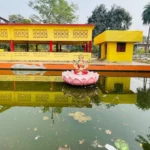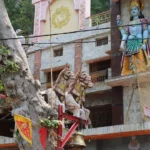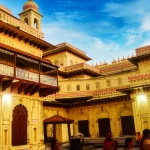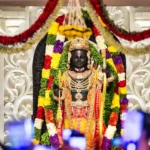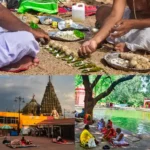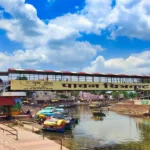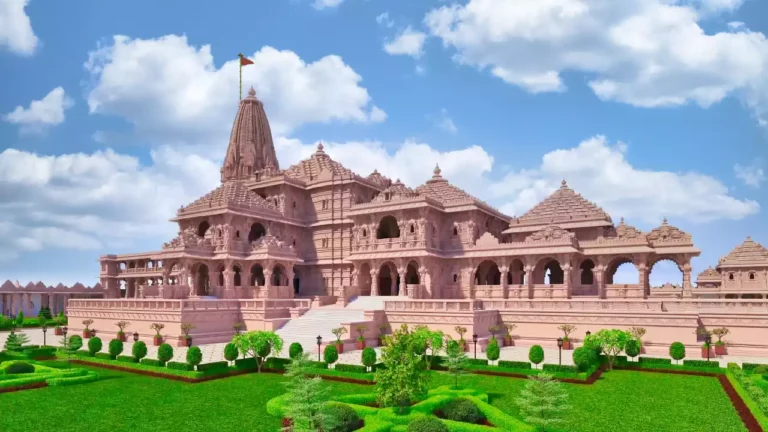An Overview of Ayodhya’s Best Pilgrimage Sites
Before diving into the one-day itinerary, here is a quick overview of Ayodhya’s must-visit pilgrimage sites:
Ram Janmabhoomi
This sacred site in the heart of Ayodhya marks the believed location of Lord Rama’s birthplace and a modest temple currently stands here while a grander structure is under construction after the original 16th century mosque was demolished in 1992.
Hanuman Garhi
This fort-like temple sits atop a steep hill and contains shrines dedicated to Lord Hanuman as well as stunning views over Ayodhya.
Kanak Bhawan
Thought to stand on the site of Lord Rama and Sita’s palace, Kanak Bhawan or ‘Palace of Gold’ now houses a temple and popular murtis.
Guptar Ghat
These bathing ghats on the Sarayu River hold great spiritual importance to pilgrims who come to bathe and perform puja here.
Gulab Bari
Literally ‘Garden of Roses’, Gulab Bari contains a tomb and shrine dedicated to a follower of a Vaishnava saint as well as tranquil gardens.
The Perfect One-Day Ayodhya Pilgrimage Itinerary
Early Morning: Ram Janmabhoomi

Begin your tour of Ayodhya at one of Hinduism’s most sacred sites, the Ram Janmabhoomi temple complex. Arrive early (ideally by 6am) to avoid crowds and join the steady stream of pilgrims gathering for the darshan of the modest yet beloved shrine said to mark Lord Rama’s birthplace. Soak up the atmosphere of devotion and spirituality.
After paying your respects at Ram Janmabhoomi, cross the road to visit Hanuman Garhi, perched on a hilltop just opposite. Climb the steep steps to reach this imposing temple dedicated to Lord Rama’s loyal devotee Hanuman. Admire panoramas over historic Ayodhya from the roof before returning to the city center.
Mid-Morning: Kanak Bhawan and Nearby Sites

After visiting Ayodhya’s main temples, spend the mid-morning further exploring the culture and heritage surrounding Lord Rama’s mythology. From Ram Janmabhoomi walk just five minutes to reach Kanak Bhawan, a temple reputedly situated within the grounds of King Dasaratha’s palace where Lord Rama and Sita spent much of their time. See the Ramanandi Math next door, an important monastery for sadhus.
Cross the road to visit Janki Mandir which commemorates the period Sita spent separated from Rama during her banishment. Then head south to the small Nageshwarnath Temple, one of India’s famous Jyotirlinga shrines.











